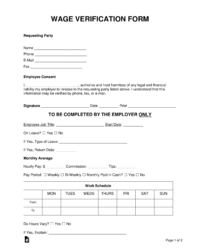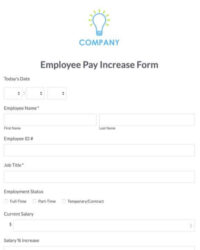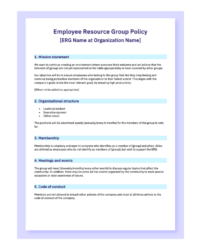Utilizing such a framework can significantly increase the likelihood of a successful outcome. A well-crafted request demonstrates professionalism, preparedness, and a clear understanding of one’s value to the organization. It can also help reduce anxiety for the employee by providing a structured approach to a potentially stressful conversation. Furthermore, it offers a documented record of the request, useful for future reference.
This discussion will further explore the key components of effective compensation requests, including crafting compelling justifications and navigating the subsequent discussion with management. Additional topics will include understanding typical company procedures for salary reviews and preparing for potential outcomes.
Key Components of a Compensation Increase Request
Effective requests for increased compensation share several key components. These elements ensure the request is clear, comprehensive, and persuasive.
1. Current Role and Responsibilities: A clear and concise description of current duties and responsibilities provides context for the request. This section should accurately reflect the employee’s current contributions to the organization.
2. Performance Achievements and Contributions: Specific examples of accomplishments and contributions exceeding expectations are crucial. Quantifiable achievements, demonstrating tangible value added to the organization, are particularly impactful.
3. Market Research and Salary Benchmarking: Presenting data on comparable salaries for similar roles in the relevant market strengthens the justification for an increase. Reliable sources for salary data should be cited.
4. Desired Salary and Justification: The requested salary should be clearly stated and supported by the preceding information. A reasoned justification connecting performance, market value, and the desired salary is essential.
5. Professional Development and Future Goals: Demonstrating a commitment to ongoing professional growth and aligning future goals with organizational objectives adds further weight to the request. This showcases long-term value and dedication.
6. Expression of Gratitude and Continued Commitment: Expressing appreciation for current opportunities and reaffirming commitment to the organization reinforces a positive and collaborative tone.
A well-structured request incorporates these elements to present a compelling case for increased compensation. Combining quantifiable achievements with market data and a clear articulation of future contributions demonstrates value and professionalism.
How to Create a Salary Increase Request
Creating a well-structured request for a salary increase requires careful planning and attention to detail. A methodical approach ensures all necessary information is presented clearly and professionally.
1. Formal Letter Format: A formal business letter format should be used, including the date, recipient’s address, and a professional salutation.
2. Introduction and Purpose: The opening paragraph should clearly state the purpose of the letter to formally request a salary increase.
3. Current Role Summary: A brief overview of the current role, including key responsibilities, provides context for the request.
4. Performance Highlights and Quantifiable Achievements: This section should detail specific accomplishments and contributions, emphasizing quantifiable results and exceeding expectations. Data and metrics should be used whenever possible.
5. Market Value Assessment and Justification: Research and present data on comparable salaries for similar roles in the current market. This information substantiates the requested increase and demonstrates an understanding of industry standards.
6. Proposed Salary and Rationale: Clearly state the desired salary and provide a concise, data-driven rationale connecting performance, market value, and the proposed increase.
7. Future Goals and Alignment with Organizational Objectives: Outline career aspirations and demonstrate how these align with the organization’s strategic goals. This reinforces long-term value and commitment.
8. Expression of Gratitude and Availability for Discussion: Express appreciation for current opportunities and indicate availability to discuss the request further. A professional closing should be included.
A comprehensive request includes a clear statement of purpose, a detailed account of accomplishments and contributions, supporting market data, and a proposed salary justified by quantifiable achievements. Maintaining a professional tone and demonstrating alignment with organizational objectives further strengthens the request.
A structured approach to requesting increased compensation, provided by a dedicated framework, offers significant advantages. It ensures clear communication of key information, including performance highlights and market value justification, while maintaining a professional tone. This organized approach benefits both employees seeking advancement and employers evaluating compensation adjustments. A well-crafted request facilitates informed decision-making and fosters constructive dialogue regarding career progression and fair compensation.
Effective utilization of such frameworks empowers individuals to advocate for their professional growth and earning potential strategically. This proactive approach not only benefits individual careers but also contributes to a more transparent and equitable compensation landscape within organizations. By embracing structured and data-driven approaches, professionals can navigate compensation discussions confidently and effectively, fostering a positive and mutually beneficial outcome.


